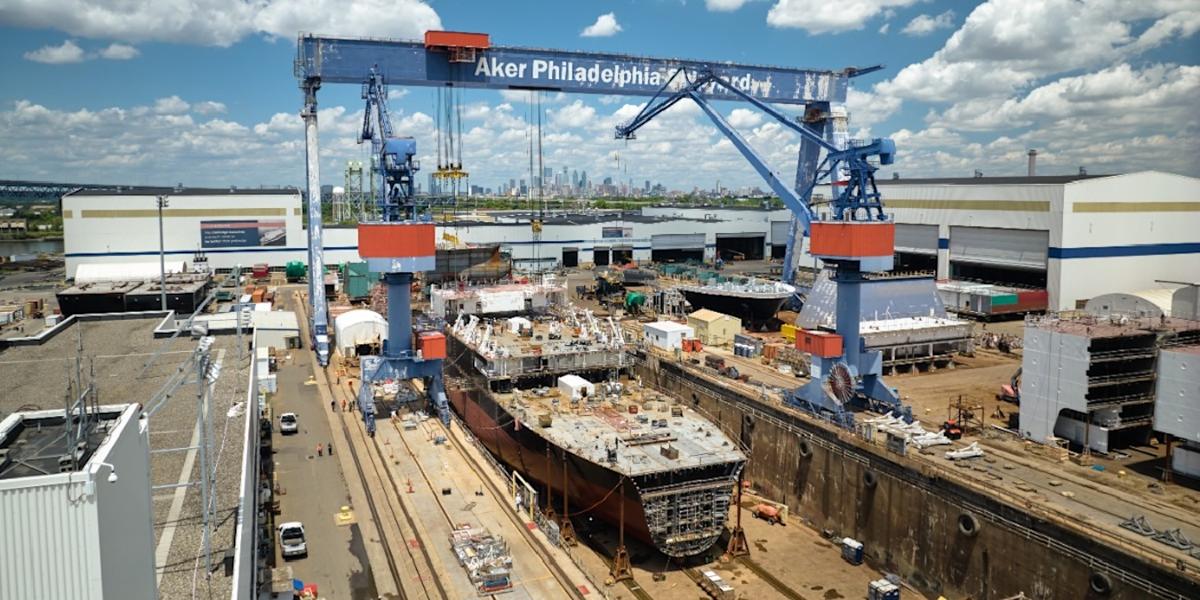Ex-FMC chief cautions: U.S. maritime push needs deeper look
Ex-FMC Chief Urges Caution in U.S. Maritime Revitalization

Former Federal Maritime Commission Chairman Louis Sola, now a lobbyist, emphasizes the need for a comprehensive approach to the Trump administration’s initiative aimed at revitalizing the U.S. maritime industry. While he supports the goal of bolstering the domestic commercial fleet and American shipyards, Sola warns of potential pitfalls and the necessity for a robust support structure. He will share his insights as a featured speaker at the upcoming Future of Freight Festival in Chattanooga on October 21-22.
Challenges Facing U.S. Shipbuilding
Louis Sola, who previously served as the chairman of the Federal Maritime Commission, advocates for an increase in U.S.-flagged and U.S.-built ships. In a recent interview, he expressed concern about the restrictive nature of current regulations, which he believes could negatively impact the export industry. “I definitely want to see more U.S.-flag ships, but I think there’s nothing better than having U.S.-built ships,” Sola stated. He highlighted the need for better-trained personnel in the maritime sector, emphasizing the importance of investing in maritime academies to produce skilled graduates.
Despite his enthusiasm for revitalizing the shipbuilding industry, Sola pointed out significant challenges. Many shipyards prefer to focus on Department of Defense contracts due to better payment and longer-term work. This preference can hinder the ability to engage in commercial shipbuilding. “A lot of the yards don’t want to do commercial work,” he noted, indicating that this trend could stifle the growth of the U.S. maritime sector. He stressed the importance of addressing ship repair capabilities as a foundational step toward a broader shipbuilding renaissance.
Sola also acknowledged the competitive landscape, particularly against countries like China, Korea, and Japan, which benefit from subsidies in labor and materials. He argued that the U.S. must identify a niche in shipbuilding that allows for mass production, akin to the Model T in the automotive industry. “We’re not going to be competitive in the first five or first 10 hulls that we produce,” he cautioned, suggesting that a long-term investment strategy is essential for success in this sector.
Strategic Focus and Future Outlook
Looking ahead, Sola believes that the U.S. maritime industry should focus on markets where it can realistically compete, such as Caribbean and Central American trade routes. He pointed out that the current pricing of U.S.-built vessels is significantly higher than those produced in Asia, which poses a barrier to competitiveness. “The price can’t be five times as much or six times as much or seven times as much,” he remarked, highlighting the need for the U.S. shipbuilding industry to overcome substantial obstacles to achieve economic viability.
In addition to shipbuilding, Sola discussed the broader implications of U.S. trade policies, particularly regarding China’s dominance in global shipping. He noted that recent port fees imposed on Chinese shipping companies could lead to a diversion of cargo away from U.S. ports, negatively impacting local economies. “A lot of goods are bypassing the Northwest Seaport Alliance ports,” he explained, warning that this trend could further erode the competitiveness of U.S. ports.
As the maritime sector navigates these challenges, Sola remains optimistic about the potential for growth and innovation. He believes that a strategic merger in the railroad industry could enhance supply chain efficiency, ultimately benefiting the maritime sector. “I think it’s a fantastic opportunity for the supply chain in general,” he concluded, emphasizing the importance of collaboration and foresight in shaping the future of U.S. maritime trade.
